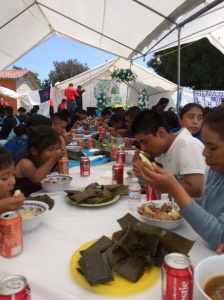Representation is a way of structuring knowledge. A recent report on Religion in Latin America, the Pew Research Center does just that, by structuring a story of religious change in Latin America as if the fundamental move Latin Americans is from Catholic practices to Protestant beliefs. This representation was also published in Spanish and Portuguese.
As far as doing what a representation should do, this report is already “structuring knowledge” as is evident by the many citations in magazines and newspapers. Christianity Today entitled its blog post Here’s What Protestants in 18 Latin American Countries Believe and Practice. AP place on the newswire information that Latin America Catholics steadily leave faith. Some Latin American evangelicals and some American missionaries have used it as if it is a call to a victory celebration.
Knowledge of phenomena is necessarily limited and includes with in it, the perspective from which it is viewed. Representations are like photographs. Only part of the scene is captured, and only from the perspective of the lens. What is left out, how much the picture was posed or staged, why the particular part of the event/scene was chosen, are lost. Other photographs may portray an event in an entirely different, maybe even contradictory, light. Neither is false, but neither is true, either. Representations do have real effects, though. So the work of structuring knowledge can be evaluated as to whether it is done responsibly as much as it is evaluated by how accurate it is.
Pew’s representation of Religion in Latin America is structured to portray a knowledge to US Americans who suffer from the idea that Latin America is monolithically Roman Catholic. That idea was never really really true, and it is less true today than it ever was, despite the selection of a Latin American as Pope Francis. The structure of the knowledge presented in the report is aimed at people who are woefully uninformed about religion in Latin America. It is aimed at correcting American myths and misconceptions. In that sense the report takes its responsibility seriously.
But the way it also structures the information in ways that promote many more misconceptions.
A more complete reflection of the issues and dynamics that move Latin Americans religiously might have been more accurate and more responsible at the same time. The use of the identities “Catholic” and “Protestant” is where the report’s problems begin. The only indication it gives that Catholic and Protestant might not actually reflect the full spectrum of religion as actually lived and engaged by Latin Americans was a “tip of the hat” to Afro-Caribbean practices. The report does not even acknowledge the huge new movements that are neither Catholic nor Protestant: IURD — Universal Church of the Kingdom of God, for example, the veneration of Guadalupe, or the resurgence of pre-colombian spiritualities.
It is lacking in criteria for answering “What drives religious practice and change in Latin America?” More useful might be an answer the question: “what difference does Latin American Christianity make for the world?”
In this report, Latin America is portrayed as a continent in the process of adapting to global categories, rather than a continent that creates new categories and has a voice in the religious experience and commitments of all humanity. This bias is particularly evident when it uses “US Hispanics” in a way that implies that Latin Americans realign their beliefs when they come to the USA, rather than exploring the influence of Latin American Christianity on the religion of all in USA.



